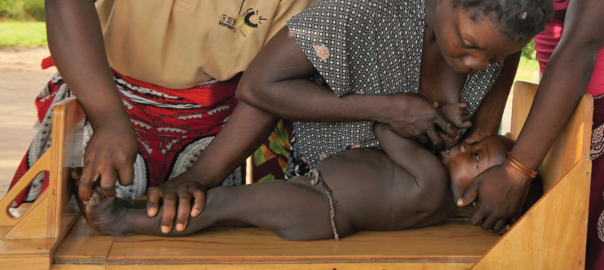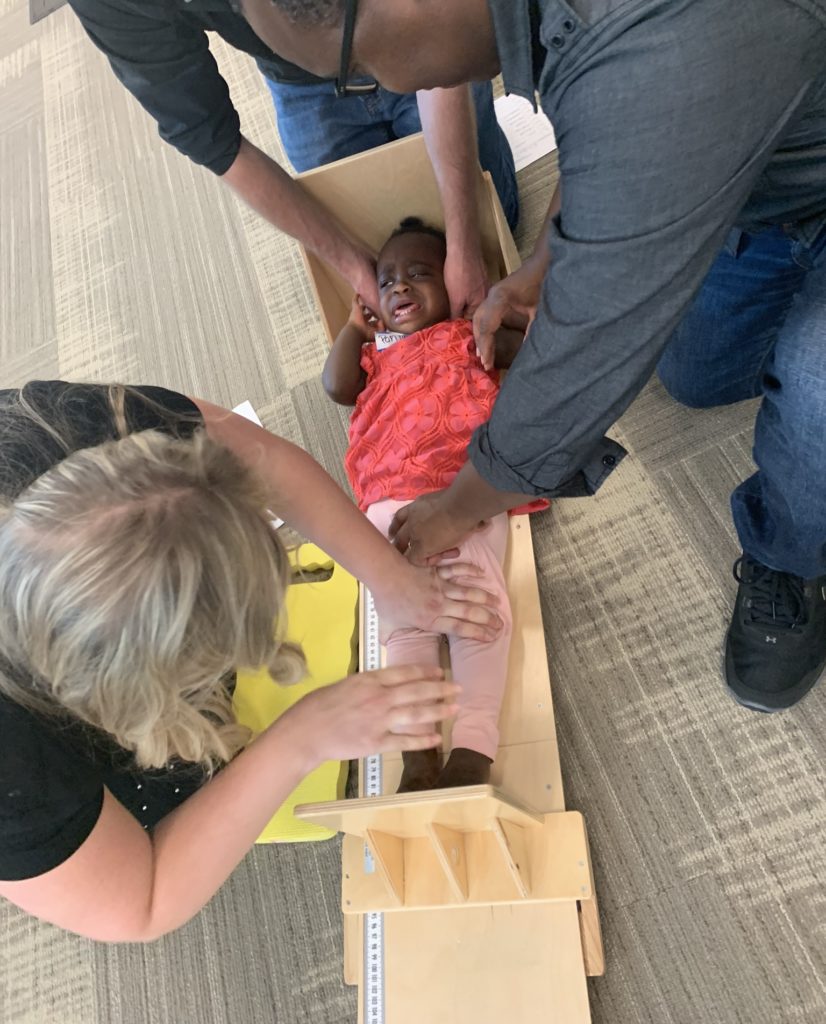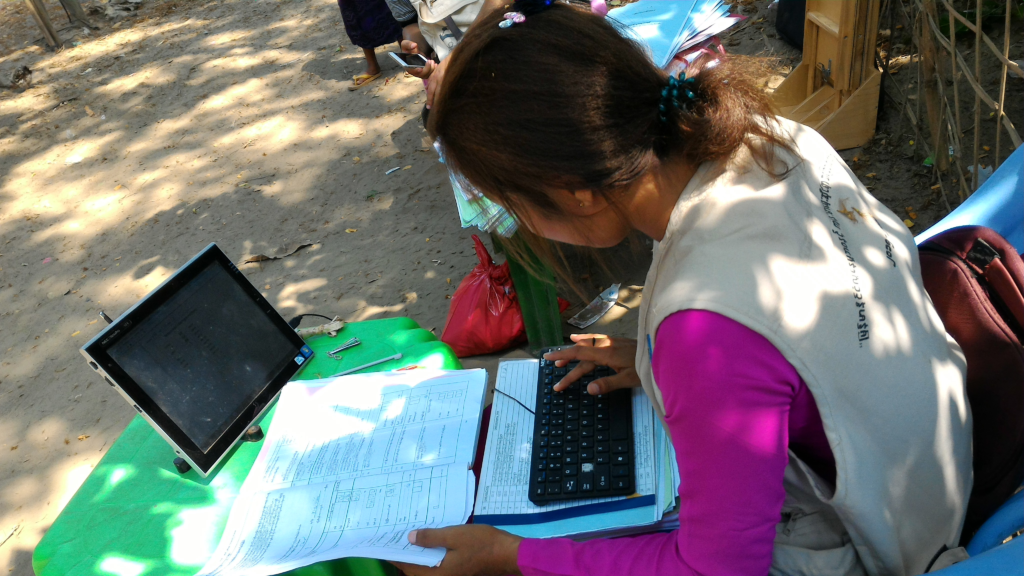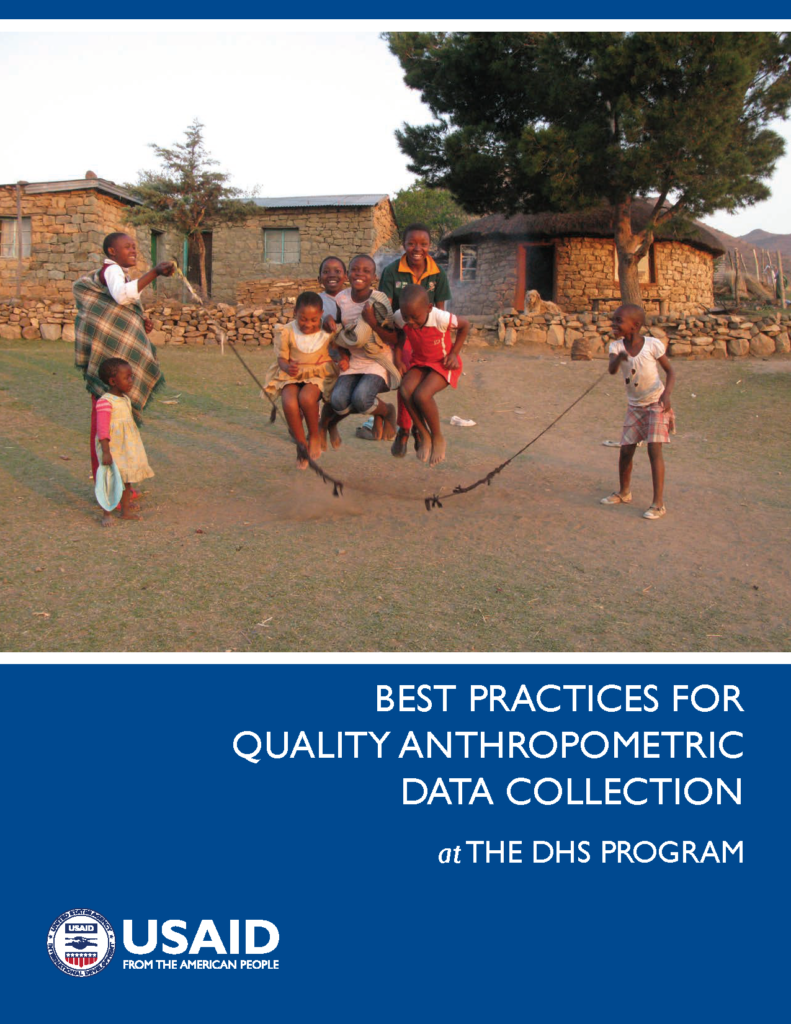Collecting Quality Anthropometric Data in The DHS Program

The DHS Program has been a leading source of anthropometric (height and weight) data for more than 30 years. Measurements are collected from children, women, and men in some surveys. This information enables countries to make data-driven decisions and to monitor their progress in improving nutritional status and achieving the Sustainable Development Goals.
The DHS Program continually improves anthropometric data collection processes. In 2018, The DHS Program undertook a qualitative study to identify how to further enhance the quality of anthropometry data. The findings prompted several tools and processes to be tested in the field in Nigeria, including biomarker checklists and anthropometry remeasurement, which have now become standard practice.
Here are some examples of how The DHS Program supports countries to collect quality anthropometric data.
Designing surveys that incorporate best practices for collecting anthropometric data
To increase knowledge and enhance capacity of countries to implement DHS surveys, The DHS Program provides technical assistance on anthropometric data collection. An anthropometry brochure summarizes the key inputs needed to collect quality anthropometric data. It is based on the recently released WHO-UNICEF guidelines for anthropometric data collection.
Training fieldworkers to take precise and accurate measurements

DHS anthropometry trainings are interactive, including standardization exercises. Trainees take two separate measurements of multiple children which are compared to those of a gold standard measurer. Staff at The DHS Program, consultants, and in-country trainers have been certified as gold standard measurers. These data are entered into the DHS Anthropometry Standardization Tool to identify trainees who need re-training and re-standardization.
Monitoring and improving anthropometric data in real-time
During data collection, field check tables are run, summarizing recently collected data that reflect team performance. If problems are discovered, feedback is provided to data collection supervisors. The DHS Anthropometry Field Check Tables are based on years of experience and analytical studies.
The DHS Program has also implemented new height and weight re-measurement procedures, in which repeat measurements are taken for a random set of children and from children with an unusual first measurement. During field work, the Computer-Assisted Personal Interviewing (CAPI) system produces a report on children selected for remeasurement. This provides information on overall anthropometry data quality and reduces the number of incorrect measurements.

Communicating quality of anthropometric data to users
Information on anthropometric data collection and quality helps users have confidence in the results and make correct inferences when comparing estimates over time and across countries. Recent DHS survey final reports provide a summary of anthropometric data quality in addition to documentation on survey implementation. For more in-depth information on data quality, DHS datasets can be inputted into the WHO Anthro Survey Analyser.
| Data quality procedures lead to high quality anthropometry data for children in Nigeria | |
 | 97% of trainees passed the standardization exercise |
| Nearly all trainees passed the standardization accuracy and precision criteria. | |
 | Only 2% of random remeasurement cases had a height difference > 1 cm |
| Data collectors’ precision for height measurements was high. | |
 | < 1% of data were implausible for each anthropometric index |
| This meets the WHO-UNICEF data quality criteria of < 1% implausible values based on WHO Growth Standards. | |
 | < 1% missing data for month and year of birth |
| Completeness of date of birth data was high. | |
 | < 3% missing data for height and weight measurements |
| There does not appear to be selection bias in height and weight data collection. | |
Data quality is an iterative process. As The DHS Program continues to learn, further enhancements and innovations will be implemented to ensure quality anthropometric data.
Featured image: © 2018 Arturo Sanabria, Courtesy of Photoshare



Thanks for ensuring the quality of anthropometric data which are at heart of measuring SDGs progress worldwide.
I have a little query is there course related to data collection for general reseacher.
I am Ph.D student (Economics) based in India, working on nutritional and development issues. A primary study become very crucial to understand local issues related to nutritional challange due to large (socioeconomic) variation in counrty like India.
How could i get accurate and high quality data on child anthropometry for my research work.
Thanks
For your own research, be sure to read Best Practices for Anthropometric Data Collection referenced in the blog post here: https://dhsdata.com/2WzLtzK . For India nutrition data, check STATcompiler here: https://dhsdata.com/2Z7uh68 , and the 2015-16 National Family Health Survey for India can be found here: https://dhsdata.com/2mQlYYs .
Thank you to share this important document.